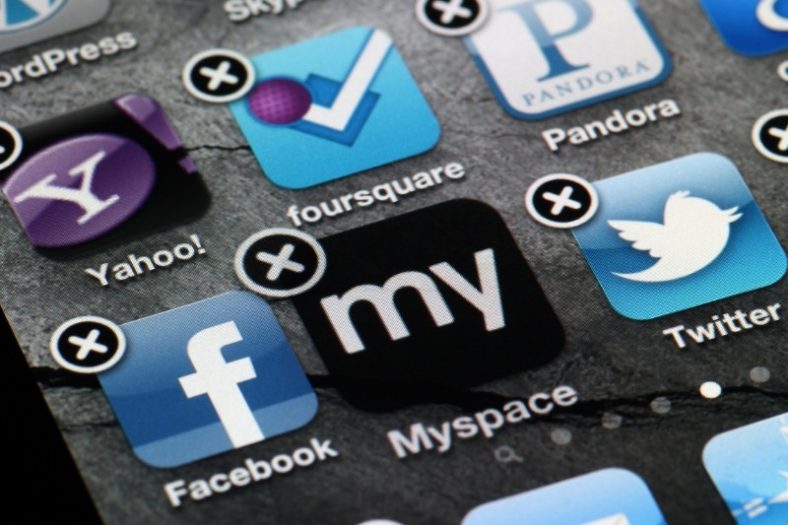What Happened To Myspace?

Myspace was once the largest social networking site in the world but is now a relatively unpopular entertainment site with music news and old profiles. Myspace’s downfall was fueled by the popularity of Facebook, poor strategy, ongoing legal battles, and multiple redesigns.
If you were into music and the Internet between 2005 and 2009, you surely remember Myspace. Founded in the summer of 2003 by the American entrepreneurs Chris DeWolfe and Tom Anderson (best known as Tom from Myspace), Myspace was the world’s leading social networking website before the rise of Mark Zuckerberg’s Facebook.
In June 2006, Myspace was the most visited website in the United States, surpassing Google in monthly visits. However, it all went awry because Myspace could not deal with the competition. Nowadays, Myspace is a comparatively forgettable entertainment website with music news and a few celebrity profiles.
At its height, Myspace was known not only for being a leading social network but also for its music database. Practically all independent musicians and bands that were active on the web between 2005 and 2009 had a Myspace profile; however, many of these profiles were lost in a sloppy technical incident in 2019. Myspace Music, launched in 2008, also failed to hit its potential.
A quick look at the numbers tells the whole story of Myspace’s downfall. Once the world’s biggest site, it is now visited by an average of 4 million monthly users, and less than 4 page views per visit (according to SimilarWeb).
The history of Myspace
Before analyzing the causes of the downfall of Myspace, it’s important to look at its history.
The foundation
It all started in the summer of 2003, back when a group of eUniverse employees realized there was a lot of potential in the now-defunct social network game Friendster. With the support of the eUniverse CEO Brad Greenspan, Chris DeWolfe and Tom Anderson teamed up with a few programmers to create the first version of Myspace.
In less than two years, Myspace became huge. With the help of eUniverse (a leading marketing company), they managed to get millions of users very quickly. In 2005, Myspace was so big that it considered buying Facebook, then an emerging social networking website. In a decision that would prove decisive, DeWolfe rejected Zuckerberg’s $75 million price tag.
The Murdoch years
Months later, Myspace was sold for $580 million to Rupert Murdoch’s News Corporation and continued to grow. In the summer of 2006, almost exactly three years after its launch, Myspace hit 100 million users. It was then they signed a $900 million advertisement deal with Google, which was essential for the website’s short-term survival.
By 2007, Myspace was worth $12 billion. However, there were worrying signs of stagnation at the company. Contrary to the emerging Facebook and Twitter, Myspace stuck to its original vision and failed to add new features to continue to attract users. It also failed to grab the attention of young students, who saw Facebook as a more viable alternative.
The bigger they are…
After being at the top of the world, Myspace could only go down. From 2009 onwards, the company dropped in value rapidly and was eventually surpassed by Facebook in registered users.
In 2011, Myspace was sold once again, this time for an underwhelming $35 million. Curiously enough, the musician Justin Timberlake teamed up with Specific Media to buy the website. Years later, Myspace changed hands once again. In 2016, it was bought by Time Inc., which sold it to the Meredith Corporation two years later.
Right now, Myspace’s dream of a comeback looks dead in the water. While Myspace.com is still around, it can be easily mistaken for just another music news webpage. Looking at Myspace today, it’s hard to believe it was once the world’s most popular social network.
Why did Myspace fail?
In a nutshell, Myspace failed due to bad management. The company was unable to cope with the growing popularity of Facebook, spent way too much money on failed projects, and was hurt by a series of legal battles.
Myspace failed because of the competition
When you’re one of the most popular websites on the Internet, you need to watch out for newcomers. Myspace missed its opportunity to acquire Facebook and undoubtedly regretted it. Alongside other emerging social networks such as Twitter, Facebook presented itself as the fresher, more intuitive, and “cooler” alternative to “old Myspace.”
Unlike Myspace, Facebook targeted young college students, and the bet proved wise. Most crucially, though, Facebook never stopped developing new features to attract users. On the other hand, Myspace was static, still relying on the Friendster-inspired “web portal” logic.
When Myspace realized it was getting “eaten” by the competition, it was too late to make significant changes. Nonetheless, Myspace managed to make too many changes! After losing its number-one spot to Facebook, Myspace went into a series of redesigns that only helped to make its few surviving members furious. In a desperate attempt to attract new users, Myspace ended up neglecting its most loyal fans.
Myspace failed because of the spending
Namely, Myspace failed because of the failure of Myspace Music. The project was meant to keep Myspace as (at least) the number-one online network for musicians. They invested a whopping $120 million in Myspace Music’s launch, but the money wasn’t enough to solve the company’s problems.
Following Myspace Music’s failure, the company was forced to fire many of its employees. Nowadays, Myspace’s staff of 1.000-plus has been reduced to about 150 workers.
Why did Myspace Music fail, though? Well, many musicians simply opted to move their profiles to Facebook and explore better networking opportunities. Others opted to join other emerging music-based social networks, such as SoundCloud and Bandcamp. In terms of offers to artists, Myspace didn’t quite cut it.
Myspace failed because of the legal issues
Safety is one of the reasons why Facebook managed to surpass Myspace. Zuckerberg was critical of Myspace’s safety policies, and he was probably right.
In its early days, Myspace was forced to pay a $30 million settlement to the mother of a child who had faced abuse on the platform. Instead of making changes, they didn’t address them substantially at all, and a couple of months later, a group of families filed a class-action suit against Myspace for the very same reason.
The cases of exploitation surrounding Myspace make for the darkest examples, but the website was also constantly dealing with smaller lawsuits due to copyright infringement (which was very poorly policed).
These legal battles took a heavy toll on Myspace. The company was constantly leaking money and the executives were too worried about legal issues to focus on developing and growing Myspace’s user base.
Myspace began at a time of unprecedented growth in social networking. During these early days, companies were likely making up their safety and security policies as they were going along, and paying the price in legal battles. Of course, while social media companies still struggle to keep up with fast changes in the industry, they now have far more processes in place and more experience to rely on.
What happened to the Myspace archives?
If you were around during Myspace’s heyday, you may remember the website as a dreamy, neverending database of independent musicians you could listen to and engage with. Today, some of Myspace’s archives are still up and running. You can visit Myspace.com and search for any old profile. Well, kind of…
While the profile of Myspace’s former owner Justin Timberlake still looks good, the Myspace page of your old garage band is probably dead. I conducted a quick search on Myspace, looking for nostalgic old projects, and realized all the old tracks I once uploaded to the website were gone.
The disappearance of my old tracks isn’t exceptional, as many musicians were hurt by a botched server migration that happened in 2019. Unbelievably, Myspace employees forgot to back more than 50 million songs and the content was lost forever. Sadly, many of these songs were made by independent artists and existed solely on Myspace.
Summary
Myspace’s example goes to show that even the world’s biggest social media companies can be doomed to failure. Once America’s number-one website, Myspace is now confined to the role of an entertainment website, publishing music news to keep its relatively small reader base happy.
Unfortunately, Myspace failed to continue to be the leading social network it once was, losing its number spot even as the number-one network for musicians. Today, its comeback is highly unlikely (to put it lightly).
For those who still remember its heyday, Myspace will always be but an image of another time, a dead and nostalgic vision of the past.





